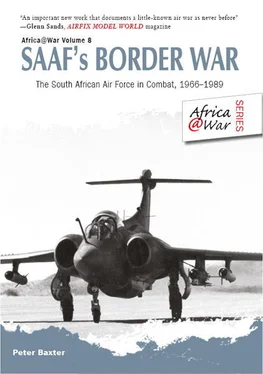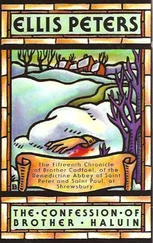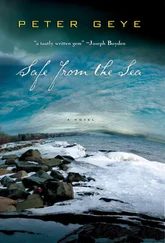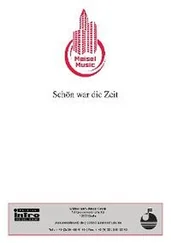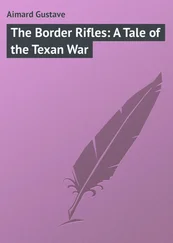Peter Baxter - SAAF's Border War
Здесь есть возможность читать онлайн «Peter Baxter - SAAF's Border War» весь текст электронной книги совершенно бесплатно (целиком полную версию без сокращений). В некоторых случаях можно слушать аудио, скачать через торрент в формате fb2 и присутствует краткое содержание. Город: Solihull, Год выпуска: 2013, ISBN: 2013, Издательство: Helion & Company, Жанр: military_history, на английском языке. Описание произведения, (предисловие) а так же отзывы посетителей доступны на портале библиотеки ЛибКат.
- Название:SAAF's Border War
- Автор:
- Издательство:Helion & Company
- Жанр:
- Год:2013
- Город:Solihull
- ISBN:978-1-908916-23-5
- Рейтинг книги:3 / 5. Голосов: 1
-
Избранное:Добавить в избранное
- Отзывы:
-
Ваша оценка:
- 60
- 1
- 2
- 3
- 4
- 5
SAAF's Border War: краткое содержание, описание и аннотация
Предлагаем к чтению аннотацию, описание, краткое содержание или предисловие (зависит от того, что написал сам автор книги «SAAF's Border War»). Если вы не нашли необходимую информацию о книге — напишите в комментариях, мы постараемся отыскать её.
SAAF's Border War — читать онлайн бесплатно полную книгу (весь текст) целиком
Ниже представлен текст книги, разбитый по страницам. Система сохранения места последней прочитанной страницы, позволяет с удобством читать онлайн бесплатно книгу «SAAF's Border War», без необходимости каждый раз заново искать на чём Вы остановились. Поставьте закладку, и сможете в любой момент перейти на страницу, на которой закончили чтение.
Интервал:
Закладка:
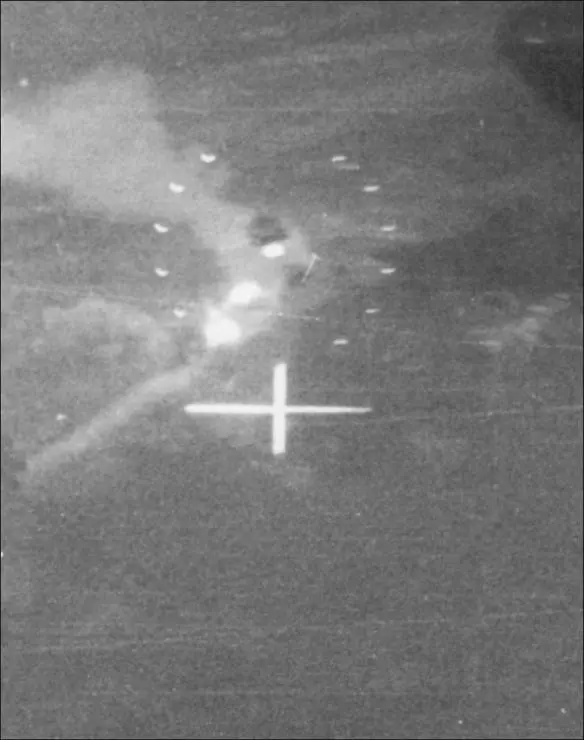
A brief orbit confirmed that the convoy had been halted and, reaching critical fuel levels, the two Mirage IIIs set a return course for AFB Ondangwa.
No sooner had they left the scene than the helicopter force loading men, equipment and casualties came under threat from two enemy tanks that appeared unexpectedly very close to the scene. The tanks were repeatedly attacked by a Buccaneer piloted by Captain Dries Marais who, even after exhausting his ammunition, buzzed the targets at low level to deflect them from the frantic activity underway around the helicopters. With moments to spare the last helicopter lifted into the air and made for home.
The SADF suffered three killed and eleven wounded while helicopter pilot Major John Church of 19 Squadron was awarded the Honoris Crux, a coveted South African military decoration, for his actions during the tense last few moment of the operation.
At its conclusion, Operation Reindeer was judged an unqualified success. Whatever other strategic objectives in terms of prospective captures may or may not have been achieved, PLAN had suffered a devastating setback to its operational capacity. However, while the tactical victory went to the SADF and the SAAF, the propaganda victory was wholly won by SWAPO. As was frequently the case in relation to both Rhodesian and South African external raids, claims that targeted facilities were innocent refugee camps occupied by women and children were consistently made, rather too consistently for it always to be true, but nonetheless no more than was ever required for it to be believed and reported internationally. There was little truth in these claims, although the villagization of larger and even smaller guerrilla camps tended to lead to an inevitable body count of women and children. Cassinga was no different and South Africa was vilified in the face of gales of moral outrage emanating from various international forums.


Be that as it may, international isolation was by then a fait accompli anyway and efforts underway internationally to begin the process of a negotiated settlement of the South West African issue were not in any way enhanced by what had taken place. SWAPO president Sam Nujoma had already made clear his intention of intensifying the armed struggle which the South Africans responded to in kind.
By the end of 1978, a landmark year for all involved, the allimportant United Nations Security Council Resolution 435 – that proposing a ceasefire and United Nations-supervised elections in South African-controlled South West Africa – had been tabled and passed. This introduced the exhaustive on-again-off-again negotiation process that would accompany the war through its many chapters, and which would only succeed in winning South African approval in 1988 on the eve of the Eastern bloc collapse.
CHAPTER FIVE:
THE SAAF IN RHODESIA
Early in 1979 12 Squadron SAAF was given the opportunity to take part in an interesting cooperation with the Rhodesian Air Force (RhAF) in the bombing of a ZIPRA base located some 1,000 kilometres from the Rhodesian border. [11] ZIPRA, or the Zimbabwe People’s Revolutionary Army, was the armed wing of ZAPU, the Zimbabwe African People’s Union, one of two armed factions attempting the overthrow of white rule in Rhodesia.
This attack, codenamed Operation Vanity , was launched as a reprisal against the shooting down of an Air Rhodesia scheduled flight between Kariba and Salisbury with the loss of 59 passengers. This was the second such incident, the first occurring in September 1978 and resulting in the death of all but 18 passengers, ten of whom were later gunned down by a ZIPRA response team. White Rhodesia, needless to say, was outraged at both these incidences, neither of which, incidentally, registered any meaningful international protest. This tended to further impress upon the white populations of both Rhodesia and South Africa the profound public opinion shift that had taken place in the few short decades since each had fought alongside the rest of the British family in two world wars.
The target was the Angolan railway town of Vila Luso located in central Angola. This was a highly ambitious attack requiring more long-range bomber capacity than the hard-pressed Rhodesians had available at the time. A request was made to the SAAF for the loan of three Canberras which took to the air from AFB Waterkloof on the evening of 25 February 1979, arriving at Victoria Falls a few hours later to a brief illumination of the airport lights before a strictly enforced blackout resumed. For the remainder of the evening a sortie plan was established before the crews turned in, in readiness for an early start.
The South African aircraft had already been armed with the standard alpha-bomb load of six mesh hoppers each containing 50 bombs. The Rhodesian aircraft were similarly primed with the addition of a payload of 1,000lb bombs, one of which, incidentally, failed to disengage from the aircraft and required making safe before being carefully removed on a bed of foam mattresses.
The strike leader for the operation was Squadron Leader Chris Dixon, a man famed for his calm and aplomb in the delivery of his famous ‘Green Leader’ speech to Zambian air traffic control during the Rhodesian attack on the Freedom Camp complex of Westlands Farm outside Lusaka in October 1978. Dixon had circled Lusaka Airport during the raid, warning air traffic control that any hostile action by the Zambian Air Force would be dealt with by the Rhodesians, even delaying the landing of a scheduled Kenya Airways flight until the operation was complete. No attempt was made by the Zambians to interfere and air traffic control complied with the Rhodesian request. During start-up Dixon’s aircraft developed a radio fault and so lead was temporarily passed to Flight Lieutenant Ted Brent and his navigator Jim Russell. It is interesting to note the observation of Brigadier-General Dick Lord who recorded the episode in his book From Fledgling to Eagle: The South African Air Force during the Border War :
Later that day, when Green Leader and his formation arrived at Fylde [airfield], the problem with Chris Dixon’s radio was clearly identified. A length of electric wire had been duct-taped from the cockpit, through the crew’s entrance door and along the fuselage to the radio bay at the back of the bomb bay, to replace a broken wire in one of the looms. Desperate measures by a desperate air force!
This was no doubt true but, despite it, the operation proceeded virtually without a hitch. Green Leader rejoined the formation over the Zambian town of Mongu on the Zambezi River and some 370 kilometres en route to the target. From there the formation climbed to 39,000 feet, accompanied by two RhAF Hunters armed with Sidewinder missiles as top cover, and continued on to the target. Shortly before arrival, the formation descended below cloud cover, entering a storm which cleared only minutes before the target came into view. “Bomb doors,” came the calm order from Green Leader as the formation arrived overhead, smoothly flying through clear weather with very little activity evident on the ground and no incoming anti-aircraft fire. Bombs were successfully deployed, after which the formation smoothly turned in the direction of home and disappeared over the southern horizon, having encountered neither obstacle nor opposition from start to finish.
Читать дальшеИнтервал:
Закладка:
Похожие книги на «SAAF's Border War»
Представляем Вашему вниманию похожие книги на «SAAF's Border War» списком для выбора. Мы отобрали схожую по названию и смыслу литературу в надежде предоставить читателям больше вариантов отыскать новые, интересные, ещё непрочитанные произведения.
Обсуждение, отзывы о книге «SAAF's Border War» и просто собственные мнения читателей. Оставьте ваши комментарии, напишите, что Вы думаете о произведении, его смысле или главных героях. Укажите что конкретно понравилось, а что нет, и почему Вы так считаете.
